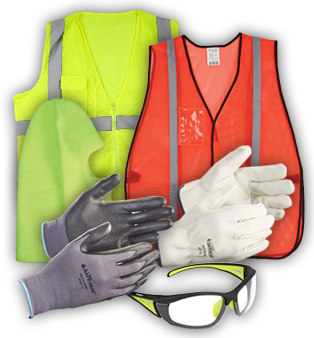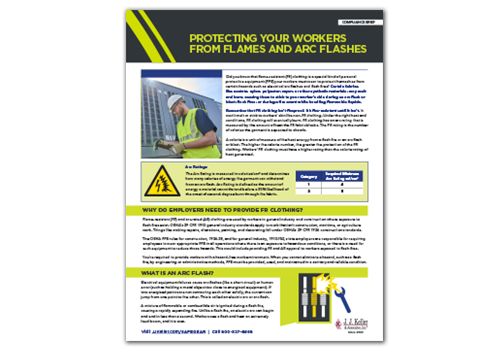August 2023
News Flash: Arc Flashes Require Special PPE
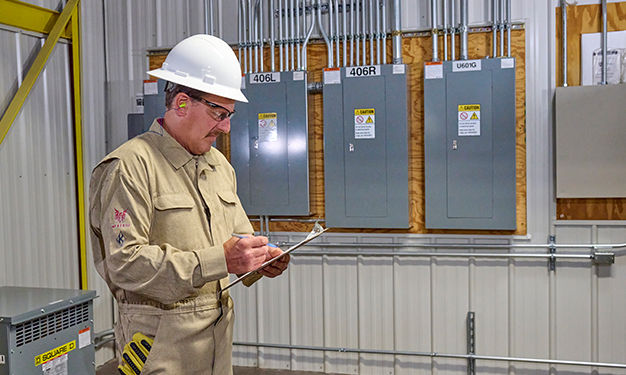
Flame-resistant (FR) and arc-rated (AR) clothing are special kinds of personal protective equipment (PPE) your workers must wear to protect themselves from certain hazards such as electrical arc flashes and flash fires.
There are 30,000 arc flash incidents every year on average, according to commonly used statistics. These incidents include average annual totals of 7,000 burn injuries, 2,000 hospitalizations, and 400 fatalities per year!
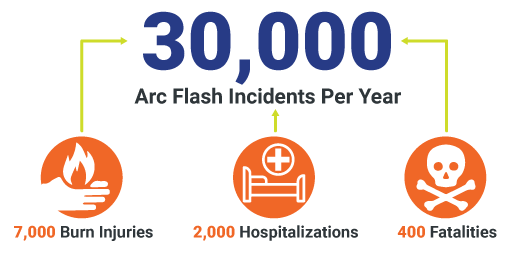
Fire resistance isn’t fireproof!
FR clothing isn’t fireproof. It’s fire-resistant until it isn’t. It won’t melt or stick to workers’ skin like non-FR clothing. Under the right heat and conditions, FR clothing will eventually burn. FR clothing has an arc rating that is measured by the amount of heat the FR fabric blocks. The FR rating is the number of calories the garment is expected to absorb.
A calorie is a unit of measure of the heat energy from a flash fire or an arc flash. The higher the calorie number, the greater the protection of the FR clothing. Workers’ FR clothing must have a higher rating than the calorie rating of heat generated.
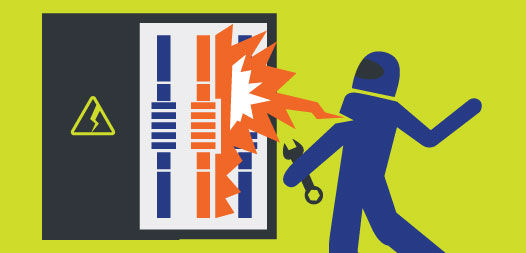
Arc flashes can be deadly
Electrical equipment failures (like a short circuit) or human error (such as holding a metal object too close to energized equipment) can cause arc flashes. If two energized points are not contacting each other solidly, the current can jump from one point to the other. This is called an arc flash.
A person can be severely injured or killed by the arc’s huge amount of heat. The temperature of the arc can range from 15,000 to 35,000 F°. (Heat in excess of 122 degrees F°. can cause third-degree burns, which do not heal.) Imagine what this heat can do to the human body.
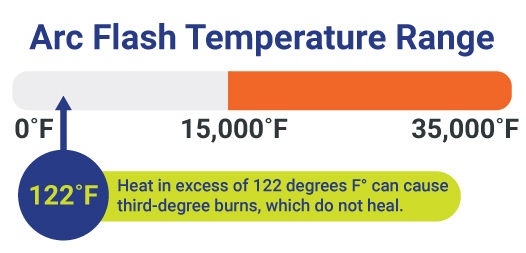
The arc immediately turns the electrical conductors into molten metal droplets that fly away from the source at near the speed of sound during an arc blast. These projectiles can travel quite a distance, starting clothing and other materials on fire that aren’t FR-rated.
Wearing AR clothing provides FR protection, too — but not the other way around! Clothing with FR protection may not be rated for protection from an arc flash. AR ratings describe the amount of incident energy (in cal/cm2) on a material or materials, resulting in a 50% probability that a second-degree skin burn injury will occur from heat transfer through the clothing. Here’s a list of the category ratings:
- (Category 1): Minimum Arc-Rating 4 cal/cm2
- (Category 2): Minimum Arc-Rating 8 cal/cm2
- (Category 3): Minimum Arc-Rating 25 cal/cm2
- (Category 4): Minimum Arc-Rating 40 cal/cm2
Using FR and AR clothing can seem simple. Put on the protective clothing, and that’s it, right? The reality is a bit more complicated than that. You need to make sure employees know how to safely wear and remove FR clothing. And, you should train them to follow proper laundry care instructions provided by the manufacturer to ensure the fabric’s protective properties remain intact.
If your employees have exposure to arc flashes or flash fire hazards, flame-resistant clothing is a must!
GET A FREE ARC FLASH COMPLIANCE BRIEF
Learn more about arc flashes and arc blasts and how flame-resistant (FR) clothing can help protect your workers, while gaining insight into applicable OSHA requirements with our FREE Compliance Brief.
